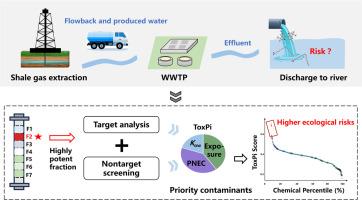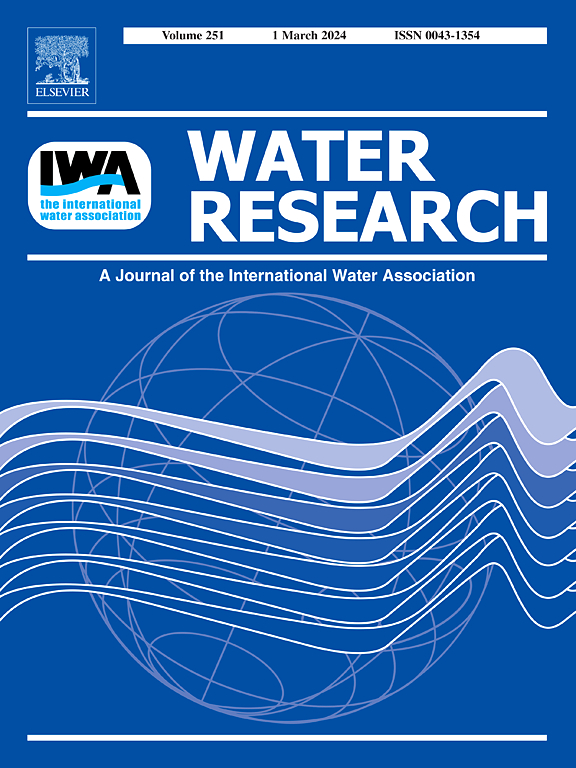Identifying and prioritizing organic toxicants in treated flowback and produced water from shale gas exploitation sites using an integrative effect-directed analysis and nontarget screening method
IF 11.4
1区 环境科学与生态学
Q1 ENGINEERING, ENVIRONMENTAL
引用次数: 0
Abstract
The use of hydraulic fracturing in shale gas exploitation has generated substantial amount of flowback and produced water (FPW), and ecological risk of these highly complex chemical mixtures has raised worldwide concern. Herein, an integrative effect-directed analysis (EDA) and nontarget screening (NTS) workflow was developed to identify and prioritize main toxicants in the treated FPW (T-FPW). The workflow included sample extraction and fractionation, zebrafish embryo toxicity tests, target and nontarget chemical analyses, and toxicity prioritization and confirmation using toxicological priority index (ToxPi). Results showed that less hydrophobic compounds (log Kow < 3.7) which were used in fracturing fluid and their degradation products were the potentially high-risk toxicants in T-FPW. Thirty-nine target compounds identified in toxic fraction explained 4.82% of the mortality. Additional 584 nontarget contaminants were annotated by NTS. Risk prioritization was achieved for 470 identified contaminants with ecotoxicity data available using a ToxPi method. Six nontarget toxicants were identified with higher ecological risks than all target contaminants, and their presence in FPW were confirmed using reference standards. A principal component analysis of NTS features revealed that EDA fractionation reduced mixture complexity and focused toxicant screening, which significantly improved NTS efficiency, highlighting advantages of integrative EDA and NTS for mixture risk assessment.

求助全文
约1分钟内获得全文
求助全文
来源期刊

Water Research
环境科学-工程:环境
CiteScore
20.80
自引率
9.40%
发文量
1307
审稿时长
38 days
期刊介绍:
Water Research, along with its open access companion journal Water Research X, serves as a platform for publishing original research papers covering various aspects of the science and technology related to the anthropogenic water cycle, water quality, and its management worldwide. The audience targeted by the journal comprises biologists, chemical engineers, chemists, civil engineers, environmental engineers, limnologists, and microbiologists. The scope of the journal include:
•Treatment processes for water and wastewaters (municipal, agricultural, industrial, and on-site treatment), including resource recovery and residuals management;
•Urban hydrology including sewer systems, stormwater management, and green infrastructure;
•Drinking water treatment and distribution;
•Potable and non-potable water reuse;
•Sanitation, public health, and risk assessment;
•Anaerobic digestion, solid and hazardous waste management, including source characterization and the effects and control of leachates and gaseous emissions;
•Contaminants (chemical, microbial, anthropogenic particles such as nanoparticles or microplastics) and related water quality sensing, monitoring, fate, and assessment;
•Anthropogenic impacts on inland, tidal, coastal and urban waters, focusing on surface and ground waters, and point and non-point sources of pollution;
•Environmental restoration, linked to surface water, groundwater and groundwater remediation;
•Analysis of the interfaces between sediments and water, and between water and atmosphere, focusing specifically on anthropogenic impacts;
•Mathematical modelling, systems analysis, machine learning, and beneficial use of big data related to the anthropogenic water cycle;
•Socio-economic, policy, and regulations studies.
 求助内容:
求助内容: 应助结果提醒方式:
应助结果提醒方式:


